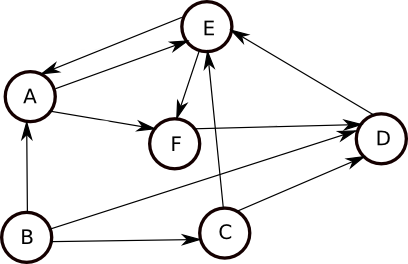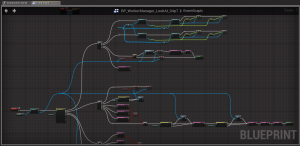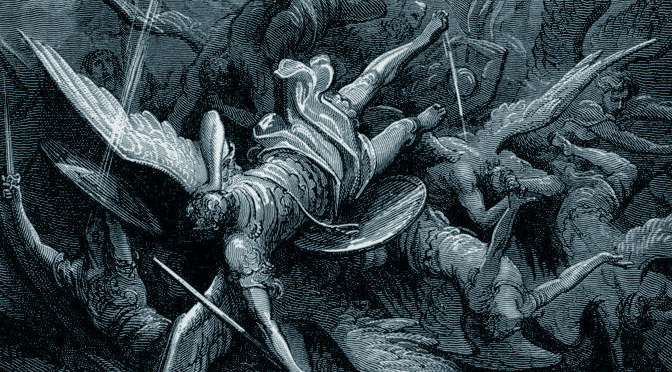(Cover Photo: ©1961 – Toho Co., Ltd.
Akira Kurosawa’s “Yojimbo”)
No problem.
Read this, then we’ll talk about it 😉
Myths & Facts
Many people believe that video game developers earn millions, live in Hawaii, drive a Ferrari, and date Victoria’s Secret supermodels. Well, maybe some of my colleagues do… Not me, for sure.
“Hey, where are the supermodels ?!”
Contrary to popular belief, career in video game development is full of challenges. Besides dealing with coding hurdles and release date stress, where time is your enemy in both cases, you need to handle egocentric teamwork meetings while keeping an eye on the tight budget. If that is not enough, you need to refine your skills forever and ever to make sure that you are keeping up with the latest technological achievements, even before they are released. – “Hey, where are the supermodels?!”
Despite all challenges, a game developer’s life is actually more upbeat than speculated. Forget about all the challenges for a minute; the best part is the necessity of refining skills. When you keep on sharpening your technical/artistic skills, you’ll have a chance of tweaking industry standard workflows. With every tweak, you’ll add a bit of haute couture touch both to the project you’re working on, and to your signature development methods. The more you sculpt a unique style, the more you stand out from the rest. And, that makes a real difference, by all means.
![]()
Education necessary?
Most preferably yes, but not essential. I studied both Science and Arts, but have always considered myself an autodidact – a self-taught person. Nobody taught me how to develop video games! Through rewarding self-discipline skills, studying various topics in Mathematics, Physics, Architecture, Sculpture and Philosophy helped me to increase self-knowledge and unleash my creative potential. I’m an advocate of the mantra, “never stop learning.”
Regarding the opportunity for learning new tricks, a new video game project still makes my heart beat like a butterfly, even after 30+ years of active coding. – I keep the spirit alive!
“Self-education is, I firmly believe, the only kind of education there is.” – (Isaac Asimov)
![]()
Manners Maketh Man
Video game development is challenging, sore and tough. Doing video game business is worse!
Because of cheap and dirty business tricks that you are not familiar with yet, your heart can be easily broken. You may lose self confidence by getting discouraged, no matter how talented you are. Misery plagues creativity! When days turn into nights, melancholy takes over. Then, your talent starts to fade away. At the final phase, you start asking yourself “What have I done to deserve this?”, and the more you question your manners the more you lose self confidence. A perfect vicious circle! – Yep, I’ve been there. I know what I’m talking about.
No worries! It’s not your fault.
Unlike typical businessmen -underestimating your skills in a hot meeting, while puffing the fume of an expensive cigar right into your eyes- game developers are artists. I’m afraid, raw capitalist tricks work on us, simply because we are fragile.
Here is the cure… Act by the book! Follow the unwritten rules and guidelines of professionalism, and be happy 😉
-
- Develop a thick skin.
- Be prepared for the worst.
- Settle with “less”. – Less is more.
- In case of failure; get angry, not sad. Stand up and fight!
- In case of criticism; embrace it. It is a chance for sharpening your skills.
- Be good at what you are doing, not the best! Best kills creativity, and feeds pride.
- You better be really good at what you are doing!
For starters, spend some time with experienced game developers. Speak less, listen more, show respect, and be gentle. Pay attention to how they tolerate mistakes. It is mistakes, that makes an artist a better one. Good artists are well aware of it, most probably you are not. That makes a difference!
“Creativity is allowing yourself to make mistakes. Art is knowing which ones to keep.” – (Scott Adams)
![]()
Knighthood served as a “Free Man”
I have always been a freelancer; a “free man” with no chains tied to a game development company/publisher. I had the chance of picking the projects I wanted, working with people I liked, and always preferred creativity over materialism – Free as a bird!
Sounds too good?
Actually, it is a state of nirvana, that comes with a few costs!
![]() Expect to work harder than full-time developers – You are a marathon runner, not a nine-to-fiver. Be prepared to work more than 10 hours a day.
Expect to work harder than full-time developers – You are a marathon runner, not a nine-to-fiver. Be prepared to work more than 10 hours a day.
“There is no substitute for hard work.” – (Thomas A. Edison)
![]() Invest in yourself – Besides work, make some time for reading something “new”. Never underestimate the advantage of using latest technologies. Keep sharpening your skills regularly, and be ahead of full-timers.
Invest in yourself – Besides work, make some time for reading something “new”. Never underestimate the advantage of using latest technologies. Keep sharpening your skills regularly, and be ahead of full-timers.
“Give me six hours to chop down a tree and I will spend the first four sharpening the axe.” – (Abraham Lincoln)
![]() Expect no respect from full-time developers – They are going to hate you! Simply because, you have already become what they want to be. – You have achieved the goals of becoming a “free” game developer. You are no more afraid of taking risks. You have right to say “No!”. Your talent is appreciated. And, you are well paid… Enough number of reasons to attract hatred. So, be a professional by getting prepared for a bunch of miserable/jealous full-timers gathered around a meeting table. Do not let the meeting room turn into a battlefield. Take control of the conversation by tolerance. Make sure they understand that you could have simply become one of them, if you hadn’t taken the risks!
Expect no respect from full-time developers – They are going to hate you! Simply because, you have already become what they want to be. – You have achieved the goals of becoming a “free” game developer. You are no more afraid of taking risks. You have right to say “No!”. Your talent is appreciated. And, you are well paid… Enough number of reasons to attract hatred. So, be a professional by getting prepared for a bunch of miserable/jealous full-timers gathered around a meeting table. Do not let the meeting room turn into a battlefield. Take control of the conversation by tolerance. Make sure they understand that you could have simply become one of them, if you hadn’t taken the risks!
“Go up close to your friend, but do not go over to him! We should also respect the enemy in our friend.” – (Friedrich Nietzsche)
![]() Expect no credits – None at all. If you are well paid and your work is appreciated, this is all you’ll get for a long time. Within years, you’ll start getting credits for your work, for sure. However, you better accept the bitter truth that you’ll never get the same “fame factor” that full-timers do. Full-time dedication to a single developer/publisher is always rewarded with full credits. I am afraid, this is how it works… As a result of your anonymous contributions; you will not be famous, you will not be invited to release parties, and you will be purposely excluded from development team photos. Most embarrassingly, your existence will be denied while your work will always be remembered! – It’s easy to deal with this case; don’t confuse fame with success. For me, success is happiness.
Expect no credits – None at all. If you are well paid and your work is appreciated, this is all you’ll get for a long time. Within years, you’ll start getting credits for your work, for sure. However, you better accept the bitter truth that you’ll never get the same “fame factor” that full-timers do. Full-time dedication to a single developer/publisher is always rewarded with full credits. I am afraid, this is how it works… As a result of your anonymous contributions; you will not be famous, you will not be invited to release parties, and you will be purposely excluded from development team photos. Most embarrassingly, your existence will be denied while your work will always be remembered! – It’s easy to deal with this case; don’t confuse fame with success. For me, success is happiness.
“Fame is the thirst of youth.” – (Lord Byron)
![]() Expect no money – At least for now! You’ll make plenty of money, soon, but this shouldn’t be the ultimate motivation of your career. Game development is all about “passion”. A passion for coding challenges, artwork challenges, teamwork challenges, and even more challenges that you do not expect at all. Keep in mind that you are solving technical problems for the sake of art. It is 100% fun! – In return, you’ll get paid for it, sooner or later.
Expect no money – At least for now! You’ll make plenty of money, soon, but this shouldn’t be the ultimate motivation of your career. Game development is all about “passion”. A passion for coding challenges, artwork challenges, teamwork challenges, and even more challenges that you do not expect at all. Keep in mind that you are solving technical problems for the sake of art. It is 100% fun! – In return, you’ll get paid for it, sooner or later.
“A wise man should have money in his head, but not in his heart.” – (Jonathan Swift)
Despite all psychological threats above, working in video game industry as a freelancer is the best way to serve and survive. Swimming with sharks in a pool will keep you prepared for anything. Contrary to full-time workers, take advantage of your freelance position; free your mind, be creative & productive, and dominate the pool. – In case you need Plan B, enjoy the luxury of switching to an another pool 😉
![]()
Beyond Barriers
Many people assume that living in Istanbul (Turkey) as a freelance game developer and doing business with international game developers/publishers would be the hardest thing to do. I hear, “But, you’ve got to be there!” kind of buzz all the time. – Actually, not at all. In addition to overcoming cultural complexities, living in Istanbul as a freelancer and doing business with international game developers/publishers has always been the smoothest part in my workflow.
 Even back in 1984, it was a no-brainer process. Before our local post office had a fax machine for hire, I used to contact people by writing business letters and sending them my codes/artwork on cassette tapes. Yes, it used to take 2 months to get a reply from UK, but that was the way how business was done in those days! – Worth waiting every minute for, actually. Each and every day I used to ask mom if the postman had delivered something for me; an acceptance letter, a cassette tape with my next project specifications on it, a new release with my code/artwork in it, or a paycheck preferably.
Even back in 1984, it was a no-brainer process. Before our local post office had a fax machine for hire, I used to contact people by writing business letters and sending them my codes/artwork on cassette tapes. Yes, it used to take 2 months to get a reply from UK, but that was the way how business was done in those days! – Worth waiting every minute for, actually. Each and every day I used to ask mom if the postman had delivered something for me; an acceptance letter, a cassette tape with my next project specifications on it, a new release with my code/artwork in it, or a paycheck preferably.
When I started working in UK, things changed entirely. Peaceful days were gone. Never-ending meetings, heavy ego traffic, more chat, less work, and unsuccessful management tricks adding insult to injury by causing more stress as we get close to the release day! Yep, usual game development company stuff, same even today. 😉
Take my word for it! Get rid of unnecessary distractors. If you are self-disciplined and well-organized, nothing compares to working at home as a freelancer. Today, we have e-mail, video conference and more than anything we need at our fingertips. Easier and faster than ever. Never mind the distance, focus on the business! Sharpen your skills. If you are really talented at something, there is simply no barrier for doing business globally.
The barriers are not erected which can say to aspiring talents and industry, “Thus far and no farther.” – (Ludwig van Beethoven)
![]()
One final word, young man… Keep in touch!
A lot of things have changed and evolved during the last 3 decades of game development, except one thing; the necessity of keeping in touch with your contacts! If you’re in entertainment business, keeping your relations alive is everything. – Sounds easy, but is actually hard to do.






 Similar to LEGO building bricks, I have been coding fundamental elements of “gameplay”. As a result of these coding sessions, I have clearly envisioned a number of next-gen features that can possibly enrich our game.
Similar to LEGO building bricks, I have been coding fundamental elements of “gameplay”. As a result of these coding sessions, I have clearly envisioned a number of next-gen features that can possibly enrich our game.



